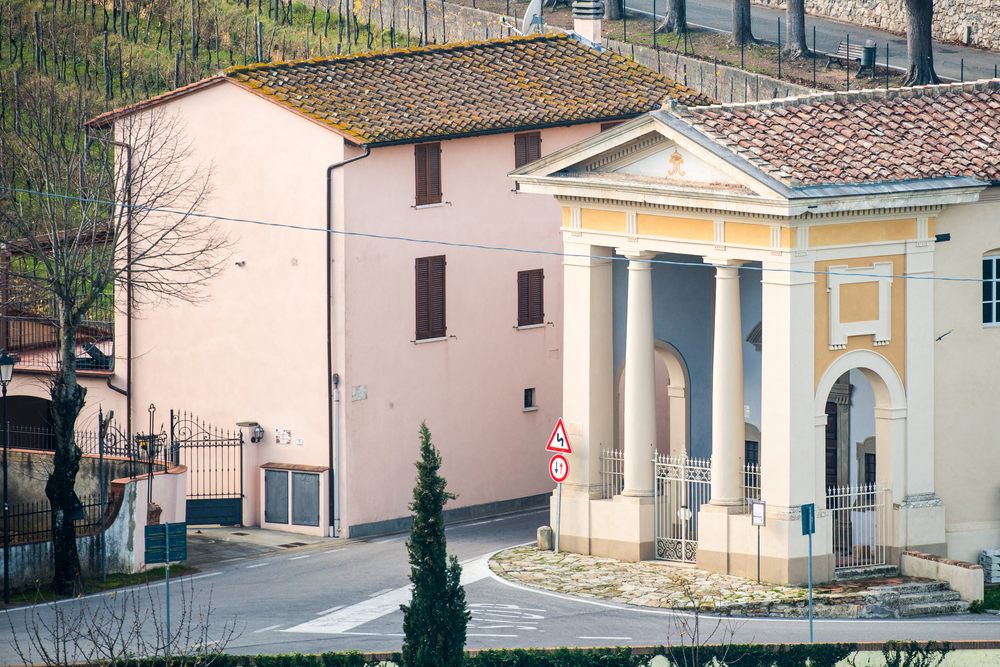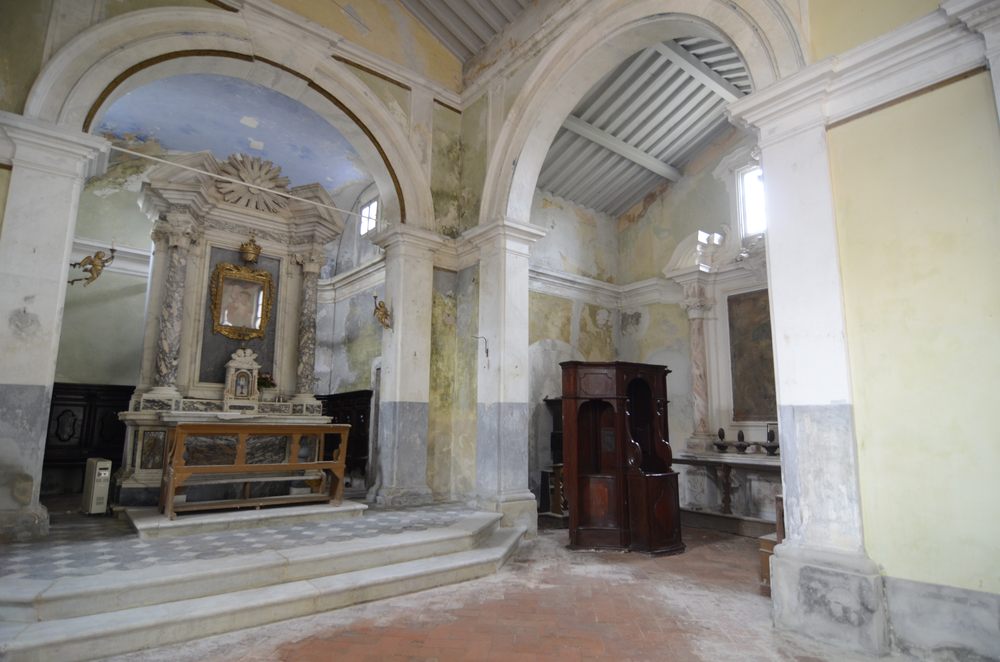Built in 1633, this church was the enlargement of an oratory known as the Madonna della Valcella, built at the fork of two roads and in existence from at least the 1400s. It was undoubtedly a place of worship since the end of the 1500s, as is clear from the bell from the small tower that was part of the nucleus of the church, within which there is writing that reads “Santa Maria Varcelli di Lari MDLXXXI”.
In the aforementioned church there was a tabernacle shrine with a frescoed image of the Virgin Mary and Child, now moved to above the main altar.
The altar was created by artistically capable hands, making it plausible that it was built according to a design by Francesco Melani, as its traditional story states. In the chancel is a beautiful choir, the work of Giovanni Cremoni. Chronological events confirm the attribution, as the church was enlarged in 1707, when the Grand Duke of Tuscany granted the congregation of the Spirito Santo (Holy Spirit) permission to assemble.
There are two lateral chapels and two columned holy water fonts, one dating to 1767, the other, of particular archaeologic interest, carved from a marble capital from late antiquity or the middle ages, taken from the destroyed parish church of San Bartolomeo di Triana. In 1734, a bell tower that "threatened collapse" was destroyed, and in 1742 the entire building was renovated. Belonging to the church's most recent facade, which can be dated to the end of the 1700s, the portico is made up of two central Tuscan columns and two side pillars, in a style that is proto-neoclassical, a rarity in the area.
The entry, on the other hand, belongs to an extreme Rococo style, with a refined layout, considerable impact and a lack of all provincialism: the semi-circular tympanum is topped by a Marian monogram, surmounted by a crown and topped by a composite pediment made up of fruit and flowers.
Two slabs depicting the Virgin's miraculous interventions are placed against the walls of the choir, demonstrating the character of the small shrine that the oratory fulfilled for the surrounding population. Large festivals were held here to celebrate the saint days of San Fruttuoso and the Madonna della Neve (Our Lady of the Snow) - which is why the oratory of the Madonna di Valcella today is known as the "Chiesa della madonna della Neve" (Church of Our Lady of the Snow).





